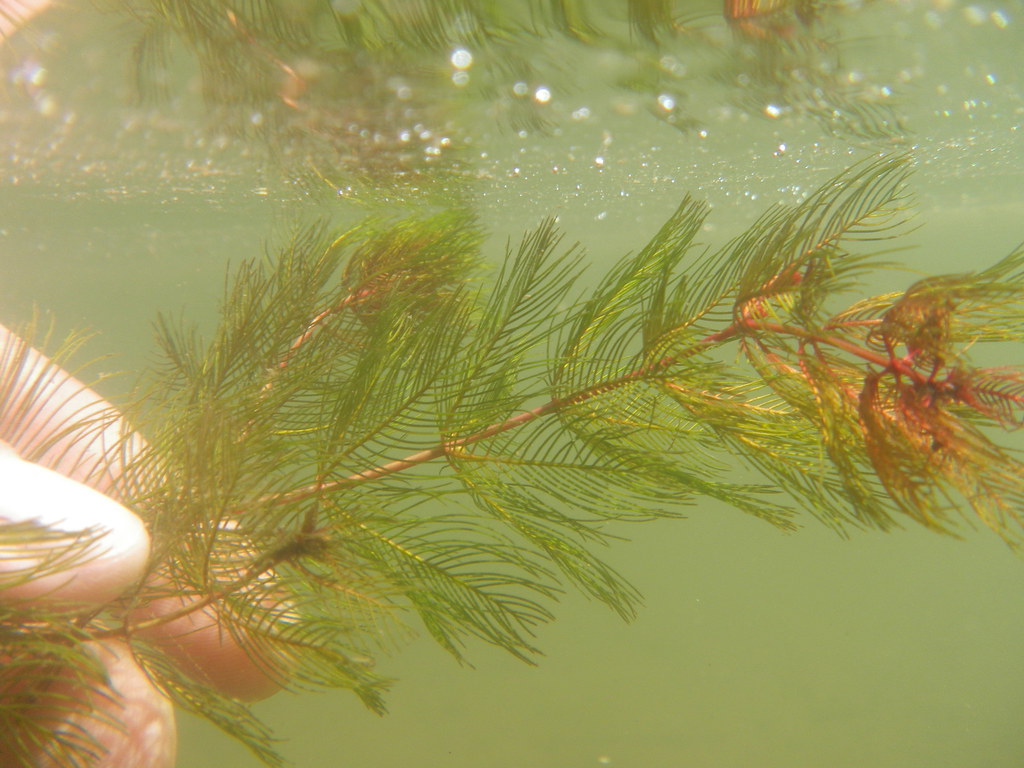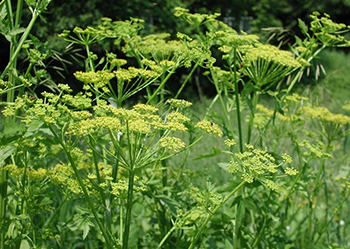A-Z
Disclaimer: do not eat any plant unless you can be certain it has been correctly identified. Do not remove plants from another person's property, or eat plants from polluted areas such as beside roads. Do not consume plants that are being treated with herbicides, and be mindful that consuming any food for the first time may trigger unexpected allergic reactions.
Common Ragweed - Ambrosia artemisiifolia L.

Idenitifcation
Stems erect, 15-150cm, usually much-branched. Lower leaves opposite (2 per node) but becoming alternate (1 per node) higher on the plant. Flower heads not showy, individually small, 2-5mm across, green and inconspicuous but very numerous and forming distinctive inflorescences.
Edible Parts
Roots, leaves, flowers, and seeds are all edible. Seeds are very high in fat.
Cautions
Common ragweed is a huge trigger for hay fever. Individuals with seasonal allergies are best to avoid it.
Look Alikes
Goldenrod
Cooking
Seeds are a good source of oil, and crushed leaves can be used on bug bites and rashes. Young leaves can be cooked and eaten as a vegetable.
Common Reed - Phragmites australis

Idenitifcation
Stems smooth, erect, thick (to 10mm in diameter), almost woody, sometimes purplish, up to 4m high, arising from long, firm, extensively creeping rhizomes. Leaf sheaths smooth and hairless with often purple margins. Inflorescence at first purplish, becoming tawny and nearly dark brown at maturity, 12-40cm long with ascending branches and forming a thick, densely branched, silky panicle,
Edible Parts
Entire plant is edible. Roots are high in sugar, edible raw or cooked. Young shoots can be eaten raw, cooked, or pickled.
Cautions
None
Look Alikes
Fairly distinct due to its great height and unique infloresence. It is a good plant for new foragers.
Cooking
Roots can be used like potatoes, but are best before the plant flowers. Young shoots make a nice vegetable and can be used like bamboo. Seeds can be collected at the end of summer.
Eurasian watermilfoil - Myriophyllum spicatum

Idenitifcation
Eurasian watermilfoil has slender stems up to 2.5 m (8.2 ft) long. The plant is a perennial that grows under the water surface and has feather-like green leaves that circle the stem in groups of four or five. Eurasian watermilfoil blooms in late July and early August and has orange/red flowers that are 4–6 mm long. Flowers are produced in the leaf axils on a spike that can be 5–20 cm long, held vertically above the water surface.
Edible Parts
Roots can be eaten raw or cooked.
Cautions
Aquatic plants growing in polluted water sources should never be consumed. After heavy rains, waterways are likely to have increased E. coli levels.
Look Alikes
Parrot feather
Cooking
The root is sweet and crunchy.
Flowering Rush - Butomus umbellatus

Idenitifcation
Found flowering in shallow waters but not deeper sites, 0.3-1.2m tall. 20-50 purple to pink flowers grow in a round cluster that resembles an umbrella on round, erect stem.
Edible Parts
Tuber is high in starch. Seeds are also edible but no specific uses are known.
Cautions
None
Look Alikes
Hardstem bulrush
Giant bur-reed
Sweet flag
Lake sedge
Cooking
Tuber can be cooked like any root vegetable. It should be peeled and the rootlets removed before consumption.
Garlic mustard - Alliaria petiolata

Idenitifcation
In their second year, plants grow from 30–100 cm (rarely to 130 cm) tall. The leaves are stalked, triangular to heart-shaped, 10–15 cm long and 5–9 cm wide, with a coarsely toothed margin (like a saw’s edge). Flowers are small and white with 4 petals arranged in a cross-like shape. The fruit is a pod containing 2 rows of shiny black seeds
Edible Parts
Leaves are best eaten young, as they can get bitter in the summer heat. Roots are spicy, comparable to horseradish. They are best harvested either before or after the plant flowers. Flowers are edible as well, and go nicely in salads.
Cautions
None known (if properly identified).
Look Alikes
Fringecup [!] (shoots only)
Piggy-back Plant (shoots only)
Ground Ivy (shoots only)
Hairy Bittercress
Cooking
Greens can be made into a pesto or a chimichurri.
Shoots can be roasted.
Roots can be used as a horseradish substitute.
Japanese knotweed - Reynoutria japonica

Idenitifcation
Knotweeds have attractive plumes of small, white to green flowers in the spring. Leaves are heart/triangular-shaped, 8-10cm W x 15cm L, and grow in a zigzag pattern in along the plant’s arching stems. Stems grow tall, straight and densely. They are hollow and green, sometimes with reddish-brown speckles growing 1–5m in height. Stems may persist through the winter as bare, grey- or straw-colored hollow stalks.
Edible Parts
The stem of japanese knotweed is similar to bamboo, juicy, tangy, and tastes like rhubarb. It can be eaten cooked or raw.
Cautions
Japanese knotweed can be confused with many species; ensure your ID is correct before consuming.
Knotweed is especially problematic, and is typically treated with harsh hebicides upon discovery. If you find a knotweed growth, ensure that the area is NOT being treated before consumption.
Look Alikes
Young woody shrubs and trees like dogwood and lilac are often confused with knotweed due to its leaf shape.
Marsh Cress - Rorippa amphibia

Idenitifcation
Height of 40–80cm with branched stems with alternate leaves. Basal leaves’ blade ciliately pinnately lobed, sunken lobes long and narrow, upper leaves’ blade entire, lanceolate, with toothed margin. Yellow flowers approx. 1cm across with four 4–5mm petals.
Edible Parts
The young leaves and stems can be eaten cooked or raw. They have a peppery-radishy taste, as they are in the mustard family.
Cautions
None known.
Look Alikes
All yellowcresses (Rorippa) look similar, but are edible.
Cooking
Marsh cress can be used in any recipe that calls for watercress.
Siberian Peashrub - Caragana arborescens

Identification
A tree that grows to 5m. Alternate, compound leaves with 8-12 pinnate leaflets. Yellow pea-like flowers turn into pods in the summer.
Edible Parts
The young pods and flowers are edible raw, taste of pea and are good in salads. older pods are edible when cooked.
Cautions
There have been anecdotal reports that the plant is toxic, but they have never been scientifically substantiated. Still, it is best to avoid consuming parts of the plant that are not explicitly known to be safe.
Look Alikes
The plant is fairly distinctive.
Cooking
Siberian peashrub seeds are high in protein, but not particularly prized for human consumption. The seeds can be cooked or dried and used like lentils, or fed to livestock.
Sweet-coltsfoot - Petasites frigidus

Identification
Stem, flower stalks, and leaves are sparsely hairy. Basal leaves emerge directly from underground colonial root system in coarse rosettes; these leaves are up to 40cm across. The leaf stalk and undersides are densely covered with white, woolly hairs, though they become smoother with age. Flowers form in a round topped cluster, about 10cm across, of creamy white to pinkish flower heads on a sturdy, erect stem emerges from the ground well before the leaves.
Edible Parts
Flowers can be eaten raw in salads. Dried flowers can be chopped and added to pancakes, fritters, or mixed with dried leaves to make tea. Young leaves can be added to soups or stews, but can be bitter. The dried and burnt leaves can reportedly be used as a salt substitute.
Cautions
Some look-alikes produce an irritating sap, though no highly similar looking species are known to be poisonous.
Coltsfoot supplements such as those purchases in herbal medicine stores are likely unsafe. Do not consume coltsfoot in high concentrations.
Look Alikes
Hogweed
Cow parsnip
Other coltsfoots (Petasites)
Wild Parsnip - Pastinaca sativa

Identification
A single green stem, 2-5cm thick, up to 1.5m tall, and smooth with few hairs. Leaves are paired and compound, with mitten-shaped, sharply toothed leaflets. Yellowish-green flowers form clusters 10-20cm wide. Similar to Queen Anne's Lace, but yellow.
Edible Parts
Young leaves and stems are edible, and the root is starchy and edible. It is reportedly much better after the first frost in autumn.
Cautions
Wild parsnips contain a sap that causes contact dermatitis in many people.
Wild parsnip is in the hemlock family. Be careful with ID, especially before the plant develops its characteristic yellow flowers!
Look Alikes
Discernible from most similar species by its yellow flowers.
Angelica
RESEMBLES HEMLOCK WHEN YOUNG
Cooking
Wild parsnip roots can be eaten like cultivated parsnips; they are good baked or fried. Greens can be added to salads and soups.
Is something missing? Let us know.
Images and identification information courtesy of the Invasive Species Council of British Columbia, Invasive Species of Idaho, Agriculture and Agri-Food Canada, Minnesota Wildflowers, The Ontario Ministry of Agriculture and Rural Affairs, Montana Weed Control Association, Eat the Weeds, Naturegate, and The Invasive Species Centre.